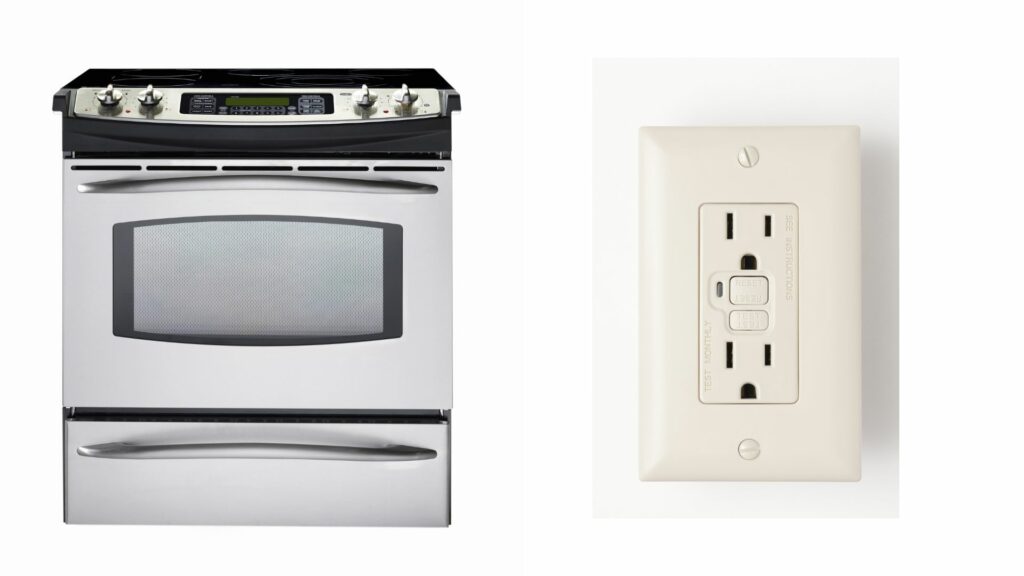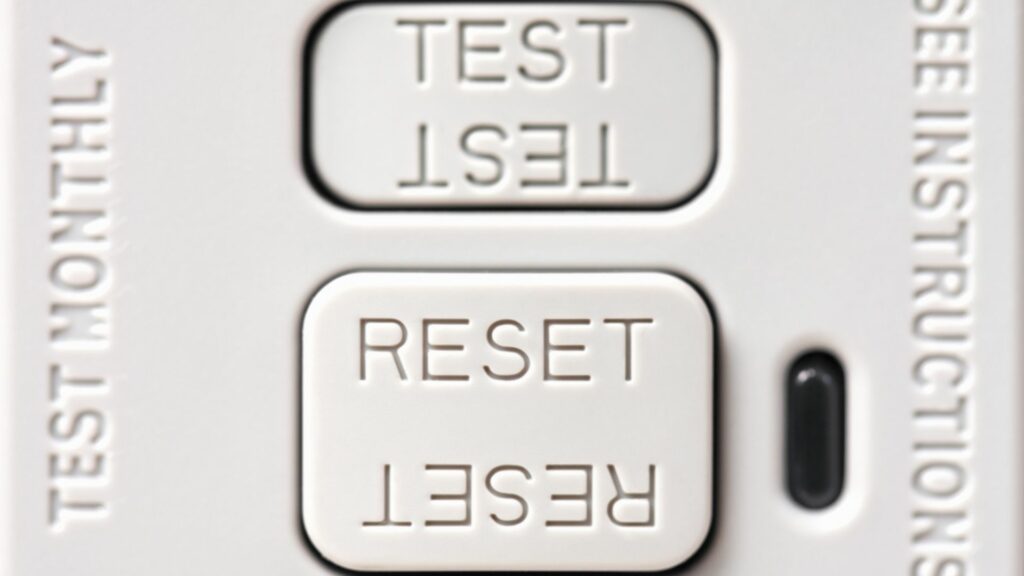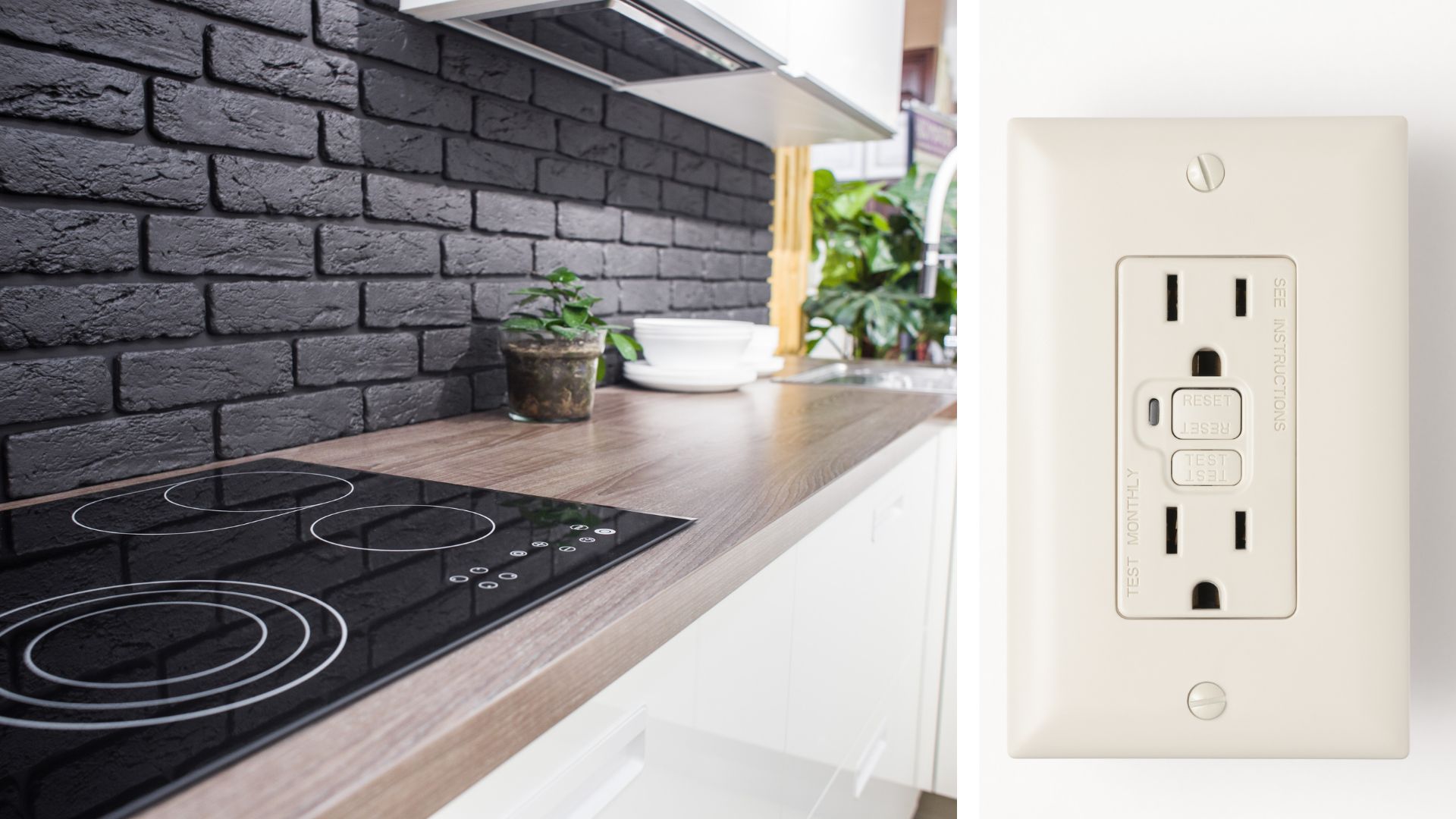You need GFCI outlets in the kitchen, especially if the outlet sits within six feet of a sink’s edge. Because ranges and stoves are kitchen appliances, newcomers may associate them with GFCI technology.
But many experienced homeowners prefer to plug their electric ranges and stoves into traditional outlets. Is that legal?
The law appears to mandate the use of GFCI technology for ranges and stoves.
At the very least, it asks consumers to install GFCIs in kitchens. Doesn’t that mean every kitchen appliance must plug into a GFCI outlet?
Not necessarily. GFCI technology in dwelling units only applies to 125V 15A and 20A single-phase receptacles. The law doesn’t prohibit you from installing ground fault protection. A two-pole GFCI breaker will protect your home’s inhabitants from electrocution and fires.
But you don’t have to plug a range or stove into a GFCI receptacle if you don’t want to. Electric ranges use a dedicated 240/250V 50A circuit. Some ranges are larger and may consume as much as 60 or 70 amps.
Others are smaller and tend to survive on 30A or 40A circuits. But at the end of the day, the range won’t run on a 15A or 20A receptacle. This puts ranges and stoves outside the NEC regulations that govern the use of GFCI technology in the kitchen.
But if that is true, why have the experts from Electrical License Renewal included electric ranges in the list of appliances that require GFCI protection? Are they wrong? No, they are not.
They sourced their information from the 2023 edition of the NEC (210.8 (D)). According to the National Fire Protection Association, these changes first occurred in 2020. The 2020 edition of the NEC expanded its regulations to encompass all receptacles ranging from 125V to 250V.
Therefore, electric ranges, which use 240V, require GFCI protection. However, this is only true if you install the stove within six feet of the sink’s edge. This gives homeowners some breathing room.
If you’d rather avoid GFCIs, remodel your kitchen in a manner that keeps the stove as far from the sink as possible. This paper from the Department of Labor and Industry has explained the justification for these changes.
The experts updating the NEC found that 250V appliances were just as dangerous as their 125V counterparts. Therefore, exempting 250V devices from the clauses that affected 125V appliances made no sense. If you normally base your decisions on the 2014 or 2017 NEC rules, find an updated edition of the NEC and apply it. Otherwise, you may fall afoul of the law. You don’t want to incur hefty fines.
Can Ranges/Stoves Work With GFCIs?

This was the question that concerned the Association of Home Appliance Manufacturers. They released a report in 2021 noting their concerns. Their primary worry was that compatibility between GFCIs and household appliances like stoves hadn’t been tested when the new NEC rules came into effect.
The update created a new requirement for manufacturers. Their products were expected to run on GFCI receptacles without tripping. However, organizations such as Underwriters Laboratories did not account for that criteria while testing and certifying the appliances.
Therefore, don’t be surprised if your range causes nuisance tripping in the GFCI. The manufacturers did not design it to run on a GFCI. If you’re lucky, your brand of choice will introduce a new line of ranges and stoves that works seamlessly with GFCI technology.
What About Hardwired Ranges/Stoves?
Hardwiring solves your GFCI problem. According to the NEC, you must plug a stove within six feet of a sink’s edge into a GFCI. However, that only applies to receptacles. You can bypass this rule by hardwiring the range.
However, this solution is inconvenient for many consumers because it means hiring a technician. Laypeople can plug a stove into an outlet. They can’t hardwire it. Additionally, hardwiring limits movement.
You can unplug a conventional range from an outlet to pull it out of its slot if you want to clean it beneath or behind. But hardwiring creates a permanent connection, which prevents you from moving the appliance unless you call an electrician to disconnect the range from its power source.
As you can see, the NEC’s rules regarding ranges and stoves have become a source of annoyance.
Why Does My Range Tripping GFCI?

1). There’s a loose connection in the stove, which is causing a leak to the ground. The GFCI will interpret this event as a ground fault. Don’t assume the loose connection is restricted to the stove.
If the GFCI serves multiple outlets and devices, you have a lot of troubleshooting ahead of you. Another appliance, such as a refrigerator, can cause the GFCI upstream to trip.
2). You have damaged or worn-out wires somewhere, but most likely in the stove.
3). The electrical noise from an igniter can trip sensitive GFCIs when it makes a spark.
4). The range has a malfunction.
5). Some appliances cannot work with GFCI technology. The manual will warn you.
6). You have an old or worn-out GFCI. Older GFCIs will trip incessantly, or they won’t work at all because they’ve reached the end of their lifespan. If the GFCI is new, it is either damaged or has a factory defect.
7). Moisture has invaded the GFCI outlet.
8). The GFCI has dust and debris.
9). You wired the GFCI or stove poorly.
How To Fix It?
- Don’t connect the range to a GFCI if the manual warns against this practice. You need a GFCI if the range is within six feet of the sink’s edge. Find a location that makes this requirement unnecessary.
- Buy a new range. This is the expensive option. However, some brands cannot survive on a GFCI. You can ask a technician to identify a solution to this conundrum. But the most straightforward answer is to acquire a sturdy range that runs without tripping the GFCI.
- Check your local code to confirm that it demands the use of GFCIs. Yes, NEC updates want consumers to use GFCI technology with ranges and stoves. But the local code takes precedence over the NEC. If the local code permits the use of traditional outlets for a stove, remove the tripping GFCI.
- Replace a defective GFCI.
- If the GFCI is too sensitive, you should also replace it. Find a brand with a reputation for withstanding heavy-duty appliances such as electric ranges and ovens.
- Replace an old GFCI.
- Check the wiring. GFCIs are easy enough to wire and rewire. The manufacturer includes diagrams. Even a layperson can install a GFCI. You can’t say the same for stoves. Ask a technician to check the wiring. They can fix any mistakes the previous installer made. Try to follow the manual’s instructions.
- Identify and tighten loose connections.
- Identify and replace damaged wires.
- If the GFCI has dust and debris, clean it. Otherwise, the nuisance tripping will continue.
- If the GFCI receptacle has water, open the outlet and either clean it or let it dry naturally.
- Inspect the appliances on the outlets downstream that the GFCI protects. Fix or replace the device responsible for the continuous tripping.

